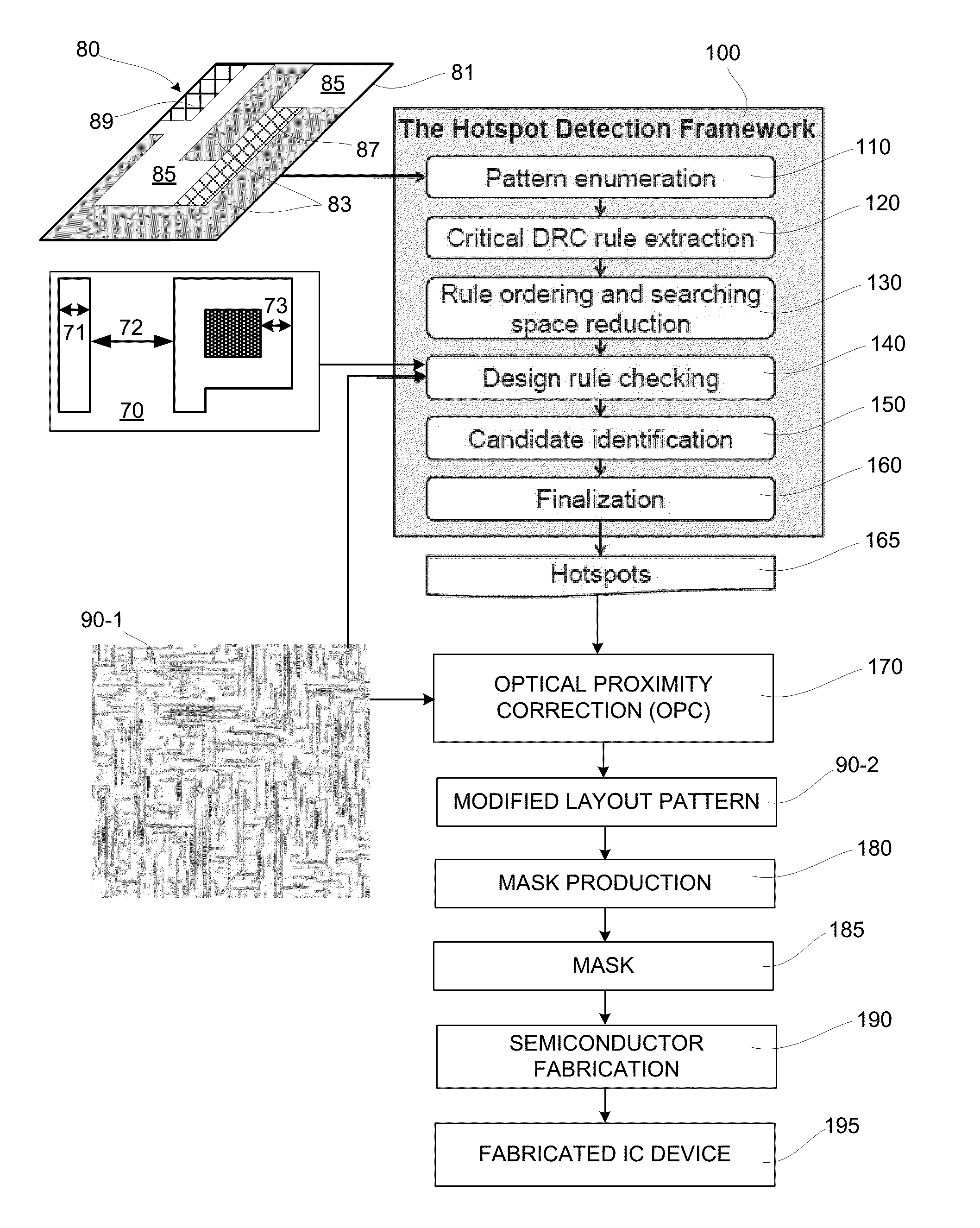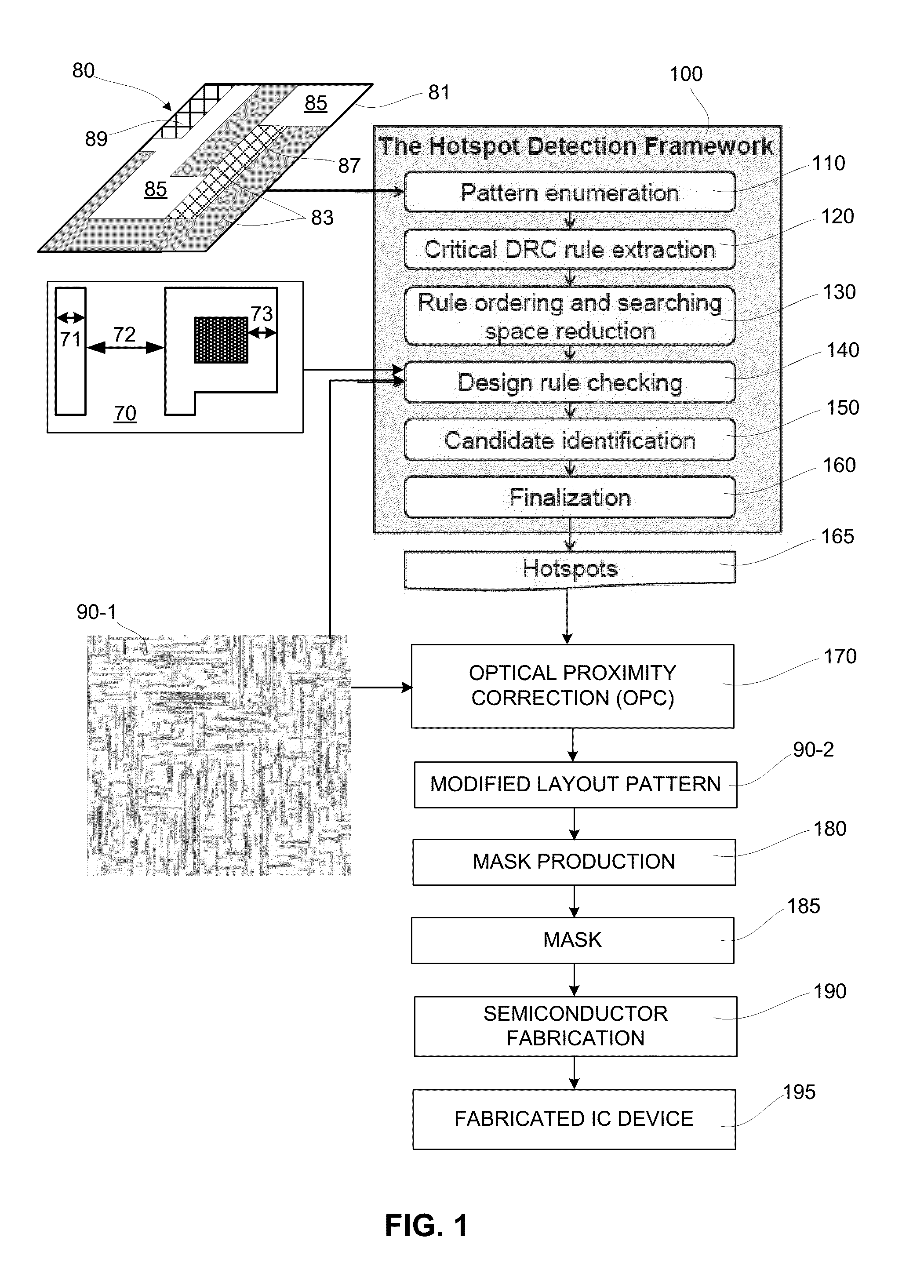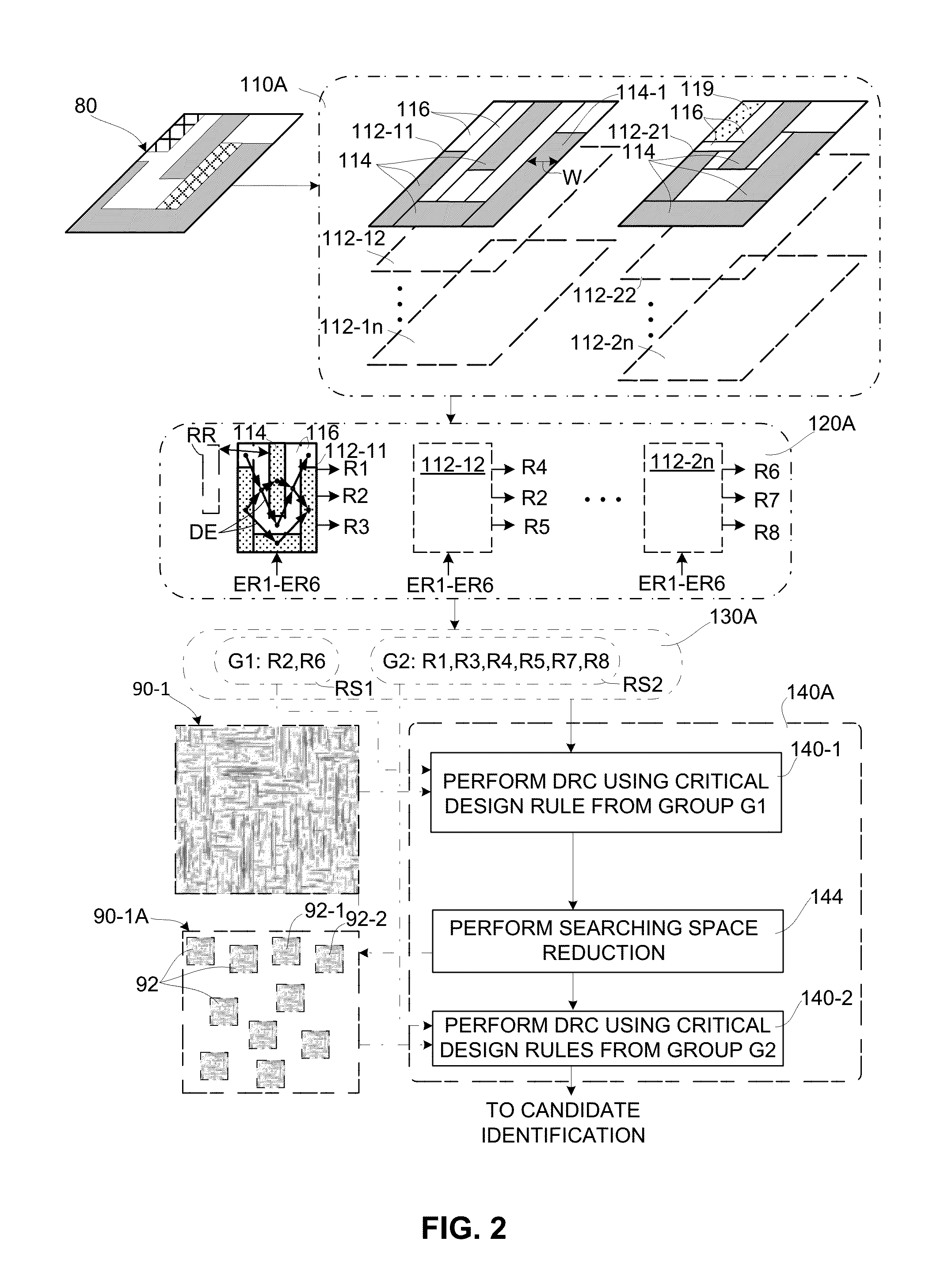DRC-Based Hotspot Detection Considering Edge Tolerance And Incomplete Specification
- Summary
- Abstract
- Description
- Claims
- Application Information
AI Technical Summary
Benefits of technology
Problems solved by technology
Method used
Image
Examples
Embodiment Construction
[0015]The present invention is directed to a DRC-based process-hotspot detection methodology that efficiently and accurately detects actual process hotspots in a layout pattern by enumerating (identifying / generating) all possible pattern topologies having corresponding alternative block arrangements defined by a foundry-provided hotspot pattern including edge tolerances and / or incompletely specified regions, extracting at least one critical topographical features from each of the pattern topologies and converting the extracted features to critical design rules arranging (ordering) the critical design rules in a manner that facilitates searching space reduction techniques, and then performing DRC in two or more phases using the searching space reduction techniques to minimize processing time. Enumerating all possible pattern topologies provides accurate identification of all actual hotspot regions in a layout pattern, but increases the number of required DRC iterations. To speed-up t...
PUM
 Login to View More
Login to View More Abstract
Description
Claims
Application Information
 Login to View More
Login to View More - R&D
- Intellectual Property
- Life Sciences
- Materials
- Tech Scout
- Unparalleled Data Quality
- Higher Quality Content
- 60% Fewer Hallucinations
Browse by: Latest US Patents, China's latest patents, Technical Efficacy Thesaurus, Application Domain, Technology Topic, Popular Technical Reports.
© 2025 PatSnap. All rights reserved.Legal|Privacy policy|Modern Slavery Act Transparency Statement|Sitemap|About US| Contact US: help@patsnap.com



